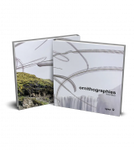![Nature's Flyers Nature's Flyers]()
Click to have a closer look
About this book
Contents
Customer reviews
Biography
Related titles
About this book
Explains the physical basis of flight with clear text and illustrations. Drawing upon bats, birds, insects, pterosaurs, and even winged seeds, Alexander details the basic operating principles of wings and then moves progressively through more complex modes of animal flight, including gliding, flapping, and maneuvering. In addition to summarizing the latest thinking about flight's energy costs, the book presents a holistic view of flight and its ramifications as it explores the ecology and evolution of flying animals, addressing behaviorally important topics such as migration and navigation.
Contents
Contents: Foreword, by Steven Vogel Preface ONE - Introduction TWO - How Wings Work THREE - Gliding and Soaring FOUR - Flapping and Hovering FIVE - Staying on Course and Changing Direction SIX - Fueling Flight SEVEN - Evolving Flyers EIGHT - Migrating NINE - Finding the Way TEN - The Global Impact of Animal Flight ELEVEN - Have the Birds and Bees Taught Us Anything Useful? Notes Glossary Bibliography Index
Customer Reviews
Biography
David E. Alexander is an assistant professor in the Department of Entomology at the University of Kansas.
By: David E Alexander
358 pages, B/w illus, figs, tabs
Scientifically accurate, up-to-date, and highly accessible, Nature's Flyers will interest not only amateur and professional ornithologists, ecologists, evolutionary biologists, physiologists, and engineers, but also anyone who is curious about the effects of flight on the evolution and diversity of the natural world. - Biology Digest; "Alexander achieves the difficult feat of explaining intrinsically complex phenomena without using mathematical or entomological jargon. As a result, the book is clear, beautifully written, and suitable for people at all levels... It introduces readers to some long-standing puzzles... How do some insects manage to fly nonstop over hundreds of miles? How do migrating birds find their way?... I recommend the book to anyone who is curious about flight." - Physics Today"



































